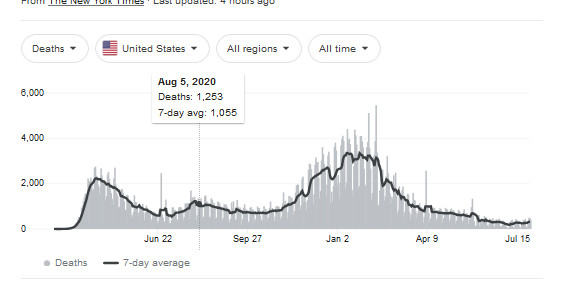The “Russian Flu” is considered the last great pandemic of the 19th century; yet, today’s variants are just common cold viruses.
When considering the hysteria streaming from both the current administration and the media about the coronavirus pandemic caused by a pathogen likely bioengineered by China, I thought it might be more instructional to look over the records and locate an example another event caused by a similar virus.
Interestingly, there is. It is the 1889 pandemic called…..the Russian Flu.
IN 1889, a disease outbreak in central Asia went global, igniting a pandemic that burned into the following year. It caused fever and fatigue, and killed an estimated 1 million people. The disease is generally blamed on influenza, and was dubbed “Russian flu“. But with no tissue samples to check for the flu virus, there is no conclusive proof.
Another possibility is that this “flu” was actually a coronavirus pandemic. The finger has been pointed at a virus first isolated in the 1960s, though today it causes nothing more serious than a common cold. In fact, there are four coronaviruses responsible for an estimated 20 to 30 per cent of colds. Only recently have virologists begun to dig into these seemingly humdrum pathogens and what they have found suggests the viruses have a far more deadly past. Researchers now believe that all four of these viruses began to infect humans in the past few centuries and, when they did, they probably sparked pandemics.
To put it in perspective: The Russian Flu killed about 1 million people worldwide, out of a population of about 1.5 billion. It is considered the last great pandemic of the 19th century and ranked among the deadliest pandemics in history.
Viruses were first filtered during an 1892 experiment. However, given their tiny size, no one observed them until the 1930s. Tracing the potential candidate for the Russian Flu has been part genetic and part relying on historical records.
For those who enjoy deep-diving into the scientific literature, there is an excellent analysis in Microbial Biotechnology: Clinical evidence that the pandemic from 1889 to 1891, commonly called the Russian flu, might have been an earlier coronavirus pandemic.
Some of the key points in this analysis, which draws from a wide variety of historical accounts:
- Both the Russian flu pandemic and COVID-19 are noted for a particular set of symptoms: The loss of smell and taste perception that is not caused by nasal congestion. Anosmia and ageusia are used as relatively reliable clinical diagnostic markers for COVID.
- The incubation period estimated for the German cases of the Russian Flu epidemic is closer to the incubation period of COVID-19 than of influenza.
- While the peak mortality in the Russian flu pandemic was with the elderly, substantial mortality was also seen in adults, but children suffered only mild symptoms similar to the current COVID-19 pandemic.
- Reports indicated that many patients suffered central nervous system damage, which is a relatively rare symptom for influenza but common in the Covid-19 pandemic.
There is also a discussion of genetic markers that were not possible to have in 1889. Danish researchers Lone Simonsen and Anders Gorm Pedersen calculated that the human coronavirus OC43 had split from the bovine coronavirus about 130 years before, approximately coinciding with the pandemic in 1889–1890. The calculation was based on genetic comparisons between bovine coronavirus and different strains of OC43.
When the Russian Flu virus jumped from cows to humans, it was highly virulent. It is noted in the literature that when a coronavirus crosses into a species for the first time, it tends to be more lethal. A case of a 2016 coronavirus epidemic among pigs in China is offered as an example.
In a nutshell, the Russian flu evolved from a serious pathogen into another common cold virus. A glance at the number of deaths associated with COVID-19 within this country indicates that this virus appears to be trending in the same direction.

The Russian Flu had a significant impact on British history:
The most famous victim was Prince Albert Victor, Queen Victoria’s grandson. Prince Eddy, as he was popularly known, contracted the disease during a New Year’s shooting party and on 14 January, after five days with pneumonia, he died aged 28. He was second in line to the throne and his death changed the line of succession. The Queen’s grandfather George, Albert’s younger brother, was crowned instead.
In conclusion: If we scramble to stop every variant, it appears we will be in lockdown for at least the next 130 years. In fact, there were several cycles of infection worldwide (beginning in late 1889, with recurrences in March to June 1891, November 1891 to June 1892, winter of 1893–1894, and early 1895). Do we want to really go through this drama for the next 6 years?
It is time to rethink the COVID-response strategy.





